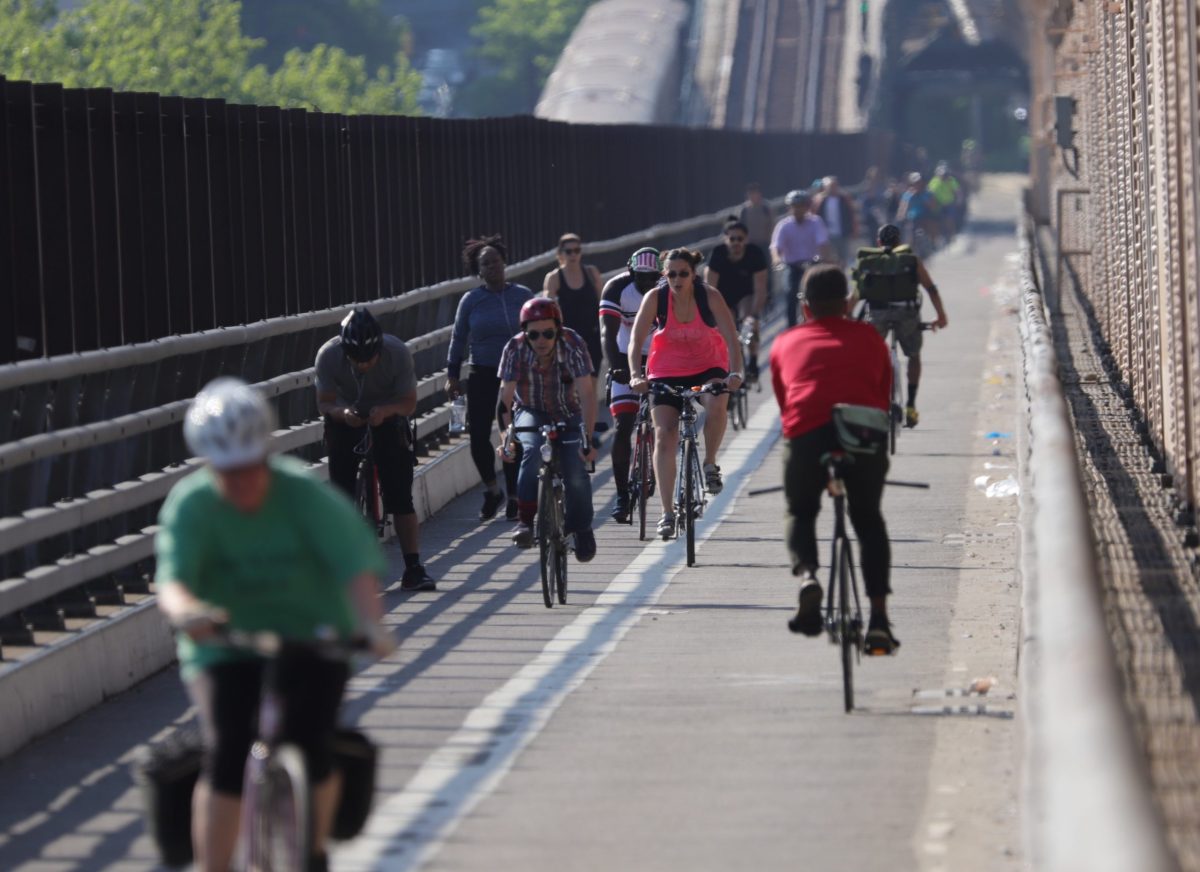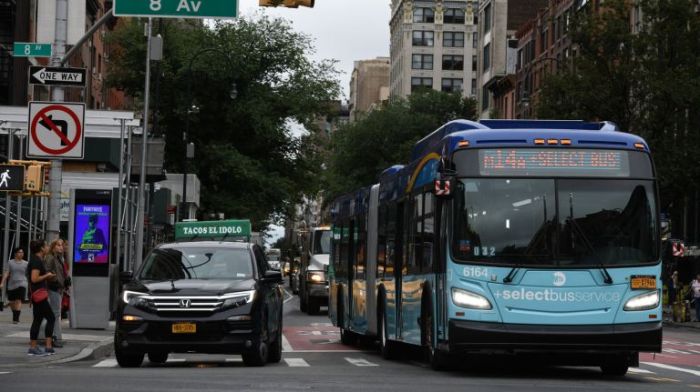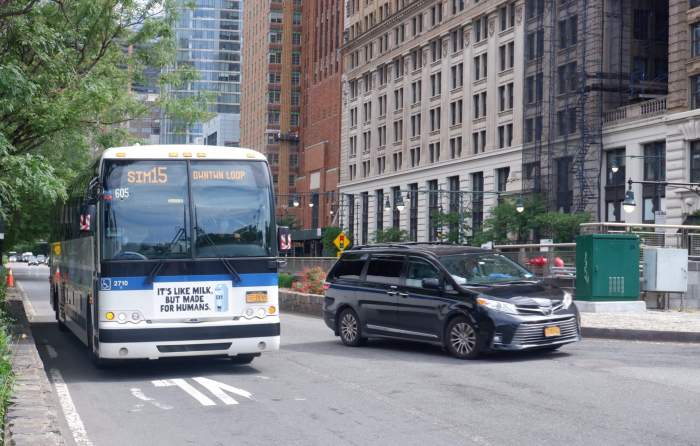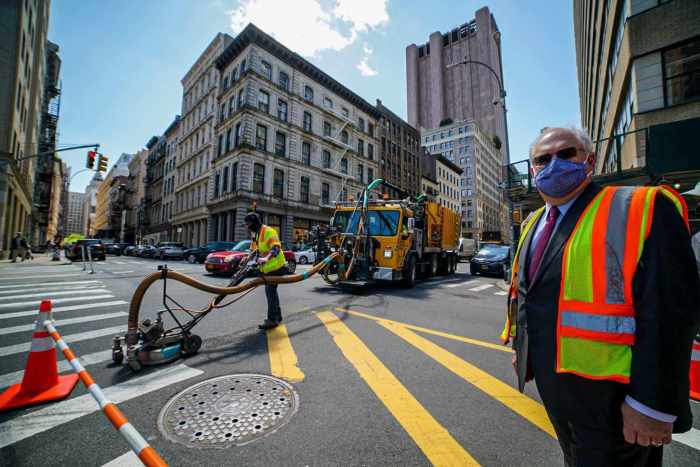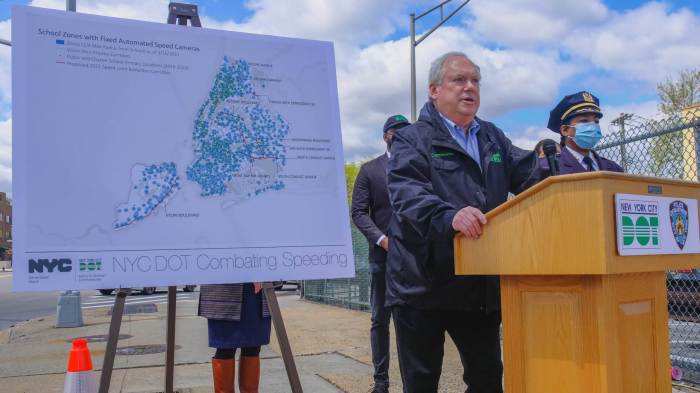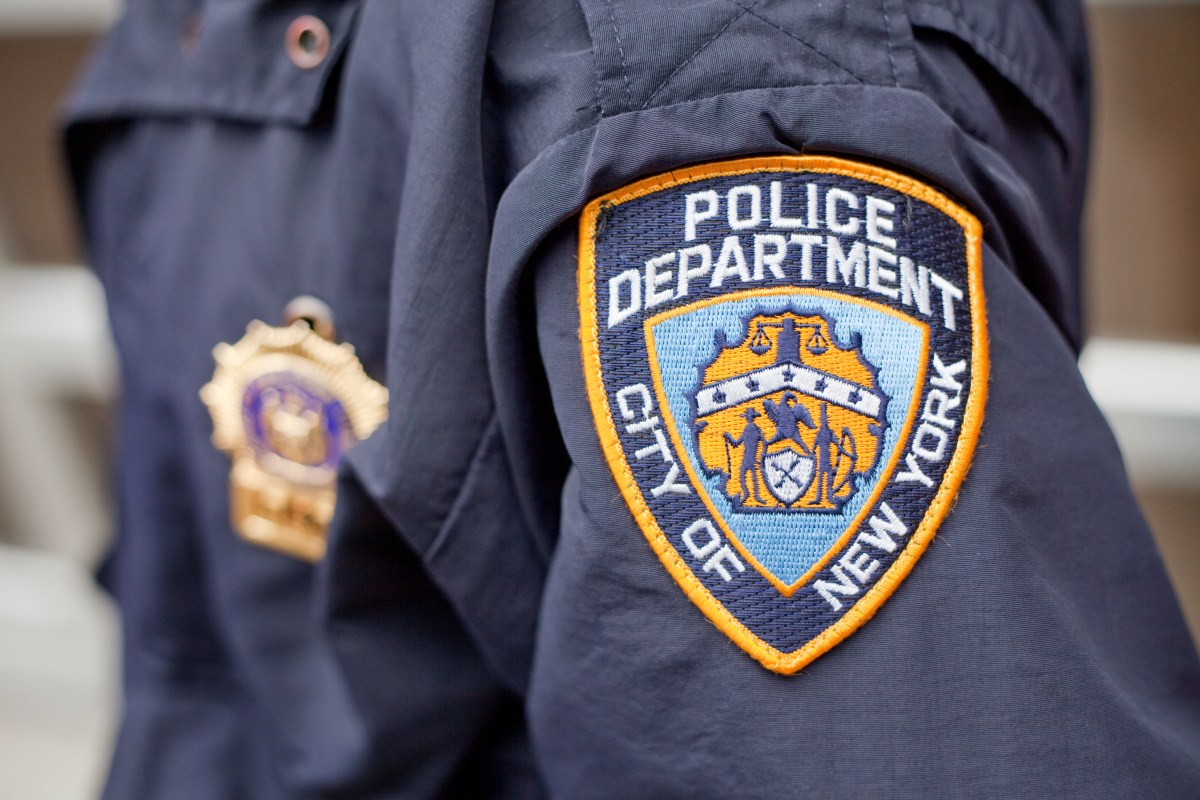The overhaul of the Ed Koch-Queensboro Bridge’s tight pedestrian and bike lanes is being held up because city transportation officials are worried about causing congestion amid an ongoing rehabilitation of the span’s upper-level roadway.
The Department of Transportation will start work by year end to redesign the shared path on the bridge’s outer roadways, but the agency won’t complete the project until they finish replacing the upper deck of the 119-year-old span in late 2022.
DOT Commissioner Hank Gutman told reporters during Mayor Bill de Blasio’s daily press briefing on Tuesday that the new lanes would open as soon as early 2022.
“We’re committed to getting Queensboro Bridge done,” Gutman said. “The construction is proceeding and we will get as far as the weather permits us this year before winter weather slows us down, but we’re looking to have it done early next year.”
DOT’s press office later followed up to say their boss “misspoke” and that, while the agency will begin work this year and provide an updated schedule in the spring, officials want to wrap up the roadwork above first.
“Work will start this year, but the commissioner misspoke – it will not be complete in early 2022, due to the work that must be completed on the road decks. We will provide an updated completion date once work recommences in the spring,” said spokesman Scott Gastel in an email.
Gastel did not detail what kind of work will start in the coming weeks or when exactly it would begin.
Mayor Bill de Blasio first announced his plans to give more space to cyclists and pedestrians on the Queensboro and Brooklyn bridges in his State of the City address in January.
While the Brooklyn Bridge’s new bike lane opened in September to much fanfare from the city and praise from bike advocates, the Queens project has been slower to get going.
The existing lane is a notorious squeeze for both pedal pushers and pedestrians who have to fend for space.
The city’s plan would make the northern outer roadway bike-only and ban cars from the southern outer roadway to turn it into a walkway, mimicking the set up on the Manhattan Bridge.
But DOT wants to keep the southern lane open for vehicles for as long as it works to renovate the upper roadway, in order to keep car traffic moving.
“[South outer roadway] must be available for traffic at key times during upper deck construction to reduce local traffic issues, based on findings from traffic study and analysis,” according to a DOT presentation from May.
The agency targeted late 2022 for the walkway’s implementation, the slides read, coinciding with the above roadway’s fix.
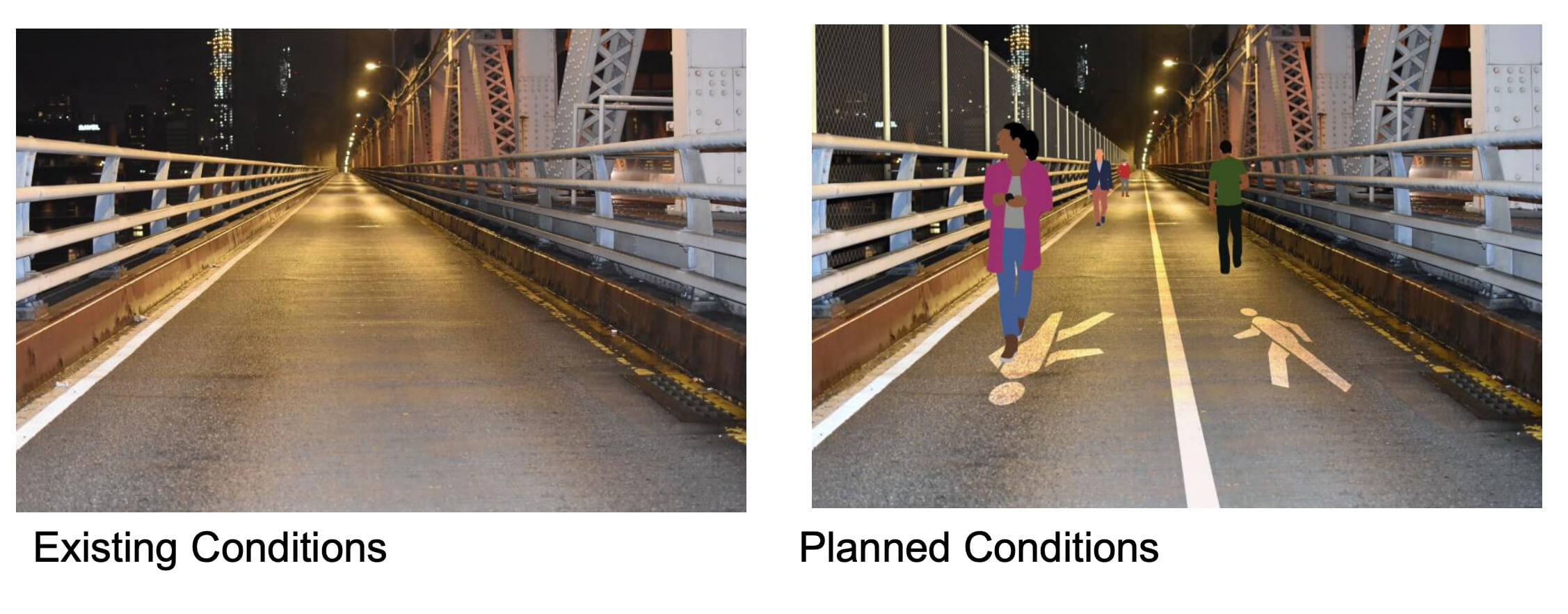
The repair project aims to extend the old bridge’s lifespan by up to 75 years by replacing the upper deck, rehabbing both approaches and its structural steel, and replace joints and barriers, according to an April presentation.
One car lane is closed at all times for the work, but sometimes the city takes two out of service. That still leaves six or seven lanes open for vehicles.
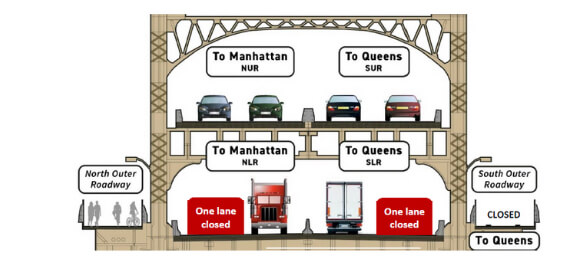
Another DOT official told a Queens community board during a virtual meeting Monday night that the fix is crucial due the bridge’s high vehicle traffic.
“There is a massive rehabilitation going on on the Queensboro Bridge, but that the administration, obviously we want to make it safe for both pedestrians and cyclists,” Nicole Garcia told Community Board 2’s Transportation Committee on Nov. 1. “Before we conceived of this bike-ped separate paths, that contract is well out the door, it’s very important.”
“The Queensboro Bridge is the workhorse of all of the East River bridges, so it carries more cars than the other ones — but that’s not to say safety isn’t our priority for bikes and peds,” the rep added.
Between 84,000-89,000 cars cross the Queensboro each way on an average day, compared to 48,000-51,000 on the Brooklyn Bridge, figures from the April presentation show.
DOT monthly bike counts show that numbers surged to more than 200,000 during the summer bike boom of 2020, but the latest figures from 2021 show a decline to around 175,000 in August, still above pre-pandemic levels of 144,000.
In comparison the Williamsburg Bridge, with its separated bike and pedestrian paths for most of the way, had nearly 258,000 crossings in August 2020 and more than 219,000 for August of this year.
During the Nov. 1 community meeting, one committee member called on DOT to speed up the process to avoid people getting injured on the narrow lanes.
“It’s also the workhorse for bikes, we’ve seen the counts, the bike boom is real and we really do need this as fast as possible because people are getting hurt unfortunately,” said Laura Shepard.



